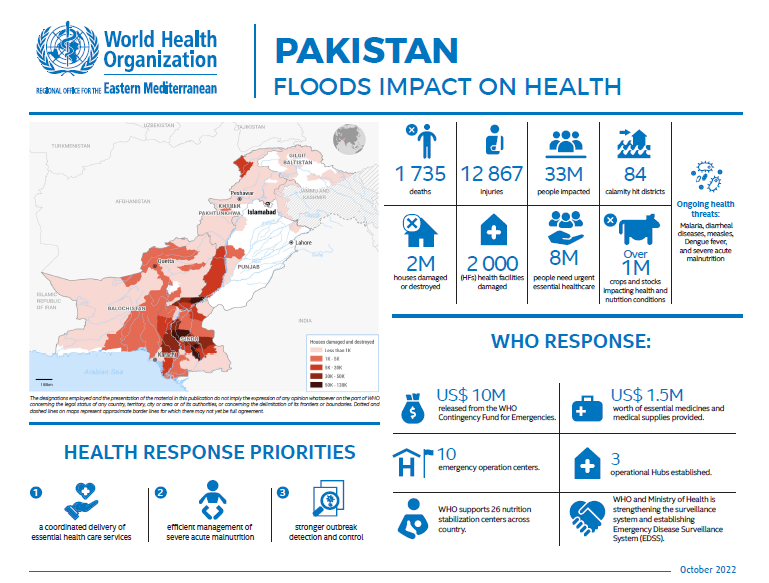Over 33 million people were affected and 7 million displaced by catastrophic floods in Pakistan
After torrential floods had devastated Pakistan, waters have started to recede in a number of affected areas over the past few weeks, but enormous volumes of persistent flood waters remain stagnant in many others.
The catastrophe has pushed the country to the brink. Around 8 million flood-affected people need health assistance, including the provision of essential medical supplies and access to basic health care. Among the biggest concerns are the high rates of severe acute malnutrition, as countless crops and stocks were also washed away.
Influxes of internally displaced populations returned to their habitats, only to face an increased risk of disease driven by damaged infrastructure, stagnant water, and inadequate sanitation facilities. Additionally, over one million houses were damaged, leaving millions helpless to face the relentless cold winter.
WHO quickly acted with its partners to deliver essential health services across various priority areas. To date, WHO has distributed medicines and emergency supplies worth US$ 1.5 million; over US$ 6 million worth of supplies is in the pipeline.
WHO scaled up its response through the establishment of 10 emergency operations centres and 3 operational hubs in Sukkur, Hyderabad and Naseerabad districts to strength the management and coordination of the overall health response. WHO also supported strengthening national disease surveillance by establishing the Emergency Disease Surveillance System in cooperation with the Ministry of National Health Services Regulations and Coordination.
Additionally, WHO worked closely with the Government of Pakistan to conduct vaccination campaigns against measles and cholera and helped ensure access to clean water through the establishment of water treatment plants.





